TL;DR
Dakota Johnson’s home blends midcentury modern architecture, organic textures, and layered vintage pieces — a blueprint for 2025’s quiet luxury interiors. Learn how to recreate Dakota Johnson’s home interior design with sculptural furniture, warm woods, and practical lighting moves.
The Cultural Moment
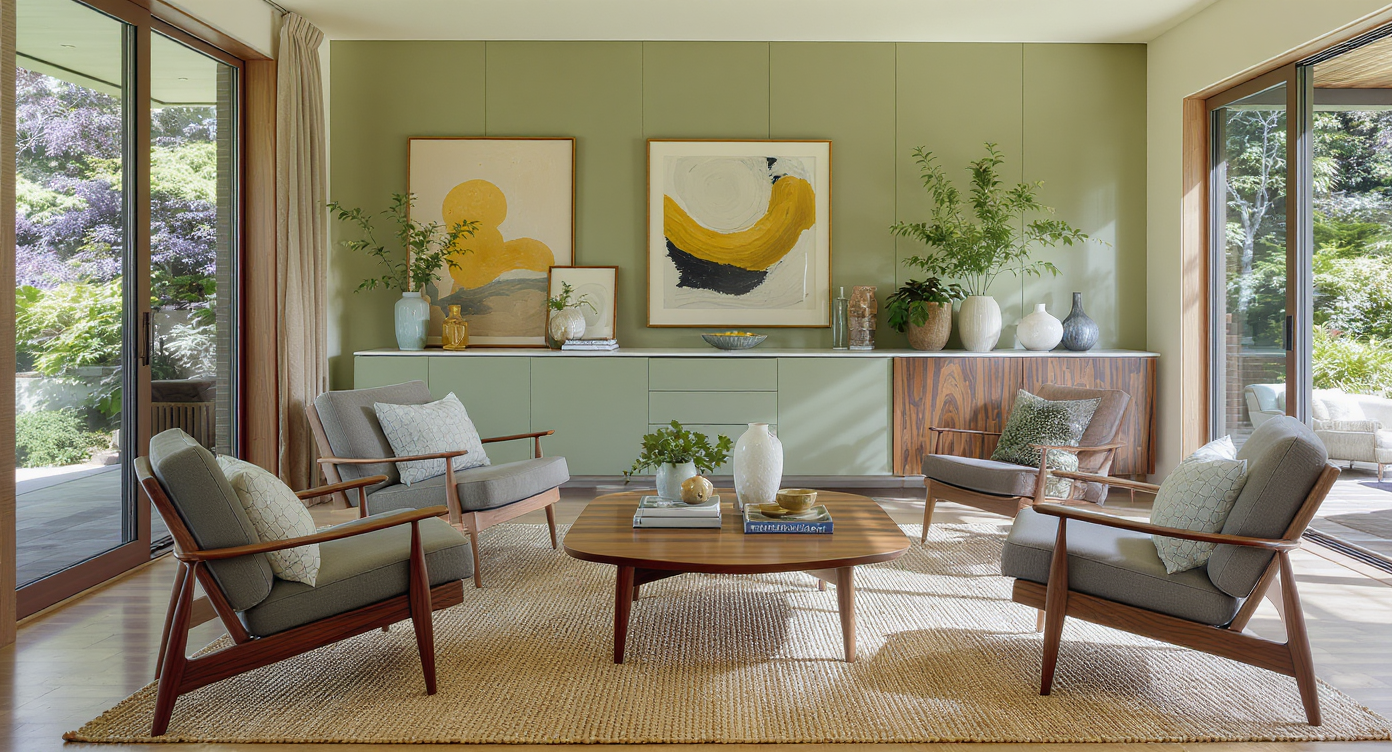
Warm vintage seating and sage-green cabinetry showcase Dakota Johnson’s calm, sustainable midcentury style.
SEO intro: Dakota Johnson’s home interior design shows how celebrity homes now favor organic modern warmth, vintage craftsmanship, and quiet luxury that lasts.
Dakota Johnson’s Los Angeles home is a midcentury modern sanctuary that pairs wood walls and vintage seating with indoor–outdoor flow — a calm, human-scaled answer to celebrity excess. Set on a sleepy cul‑de‑sac, the Carl Maston–designed house feels like a tree house on a boat: one living room wall is a sequence of oversized entry doors; the opposite wall lifts like garage doors to a lap pool. The effect is cinematic without being loud.
Here’s the thing: after a decade of maximalist feed-friendly looks, celebrity home trends in 2025 are about comfort, provenance, and sustainability. Johnson’s space hits all three. Antique and vintage seating gather around a midcentury Harvey Probber cocktail table; a vintage Paul Laszlo for Brown Saltman credenza anchors art and books; the kitchen’s sage-green cabinetry grounds daily rituals. We no longer look at celebrity homes for envy; we look for guidance.
The Defining Aesthetic
Johnson’s living room distills organic modern interiors into something lived-in: layered neutrals, soft curves, and light that moves across wood like water. Designers often note that this house is a masterclass in sculptural serenity and personal opulence, balanced in equal parts.
Sculptural Serenity
Serenity comes from shape, proportion, and natural light, not from emptiness. The living room’s vintage seating surrounds a midcentury cocktail table by Harvey Probber, keeping the coffee table height within 1–2 inches of adjacent seat height — a small rule that makes conversation easier. Opposite the wall of oversized entry doors, three floor-to-ceiling windows tilt open to the pool, giving 5–6 feet of unobstructed flow so traffic never pinches.
Textured neutrals do the heavy lifting: warm wood walls, nubby linens, a time-softened antique rug. Instead of a statement chandelier, layered lighting rules — think a vintage lamp on a custom sideboard by Pierce & Ward, plus hidden, dimmable sources that sit at eye level. Experts recommend 14–18 inches between sofa and coffee table to keep reach comfortable and circulation intact.
Personal Opulence
Personal opulence is quiet, tactile, and memory-rich. A photograph by Patrick Hoelck rests on that Paul Laszlo credenza; an Art Deco piano hints at late-night sessions. In the dining room, a French Art Deco pendant glows above a custom table with Nickey Kehoe chairs; in the kitchen, Benjamin Moore’s Alligator Alley paints the cabinetry a sophisticated green, with a vintage Hans‑Agne Jakobsson fixture floating above an antique table and Tito Agnoli chairs. Hardware mixes brass and patinated metal — a reminder that finishes don’t have to match to feel intentional.
Designers say Dakota Johnson’s home proves serenity can still be glamorous: curate fewer, better pieces and leave negative space so each one can breathe.
Anecdote
At a recent project, a client slid a curved sofa six inches to clear a sightline to the garden and the room exhaled; sometimes the smallest move unlocks the whole house. Johnson’s “tree house on a boat” doors deliver the same magic, proving that flow can be the most luxurious feature of all.
Design Philosophy — What It Says About Them
This house reads like autobiography. It’s clean yet cozy, midcentury yet sentimental — a home for an actress who lives on sets but wants an anchor. Johnson’s shelves hold a Patti Smith place card with a hand-scrawled number, a Hunter S. Thompson photograph, and a David Hockney piece gifted by Melanie Griffith. Nearby, a Harmony Korine painting of hand-holding creatures adds tender grit.
Vintage-first choices and craft-forward updates shrink the footprint: original wood preserved where possible, concrete repeated in bath and main level, salvaging what can be kept. “Luxury isn’t about shine anymore — it’s about stillness,” says a designer familiar with the project, pointing to a palette of wood, linen, stone, and softly aged metals. The result is steadying — a space that edits out noise so life can take center stage.
Common Mistakes & Misconceptions (and What To Do Instead)
Copying a celebrity living room often fails when you chase objects instead of principles. Use scale, texture, and light as your north stars.
- Copying exact furniture instead of proportion: Match scale and clearance first. Keep 30–36 inches for main walkways; let rugs extend under at least the front legs of seating.
- Overloading brand names instead of textures: Prioritize tactile layers — linen, wool, wood, plaster. Aim for a 60–30–10 ratio of base, secondary, and accent tones.
- Forgetting lived-in warmth: Add one beat-up antique or vintage piece per room so the space feels collected, not staged.
- Mismanaging scale in small spaces: Choose a coffee table 2/3 the sofa length; hang art with its center at about 57 inches from the floor.
- Neglecting lighting layers: Use three types — ambient, task, and accent — and put at least two on dimmers. Wall sconces generally sit 60–66 inches high.
The secret isn’t in what Dakota Johnson bought — it’s in what she edited out. Edit by half, then add back only what you miss.
Insider Tips, A Room’s Story, and The Ripple Effect
The material palette is disciplined: stone, linen, and brass repeated room to room; warm wood and cane for depth; a quiet hit of green in the kitchen. Designers advise repeating 3–5 materials across the entire home to create rhythm without monotony. Soft edges matter — curved sofas, rounded tables, bullnose stone — to keep the eye and body moving.
Lighting is deliberate. Instead of chandelier theatrics, think hidden LEDs to graze wood walls, a vintage table lamp to punctuate a credenza, and warm 2700K bulbs throughout. Flow, not symmetry, sets the plan: align pathways to views and keep 18 inches clear around tables so circulation feels natural.
Behind the scenes, a few details sing. Upstairs, cork once covered the floor; when it couldn’t be saved, wood took its place for continuity with the main level. In the primary bath, cabinetry was color-matched to a beloved sweater — a dusty-rose camel — paired with a deep soaking tub and double vanities, the kind of practical luxury experts recommend for two-person routines.
The ripple effect is already here: #quietluxury and #celebrityhomegoals continue to surge, and this look is seeding collaborations in lighting, vintage resellers, and paint palettes. Platforms like ReimagineHome are turning this aesthetic into a visual playground — letting users experiment with Dakota Johnson’s palette, materials, and layout digitally before they buy.
Publisher notes — suggested image captions and alt text: “Dakota Johnson’s living room with wood walls, vintage seating, and Harvey Probber table, doors opening to lap pool” (alt). “Sage-green kitchen cabinets in Benjamin Moore Alligator Alley with Hans‑Agne Jakobsson light” (alt).
You can’t fake serenity — it’s designed into the walls.
Visualization Scenario
Imagine late afternoon light spilling across travertine and wood, a curved linen sofa catching the glow, and the garage-door windows lifting to the lap pool with a hush. A single record spins from a neatly alphabetized collection; the room smells faintly of cedar and warm wax. Conversation softens. The world slows to the rhythm of home.
FAQ
How do I recreate Dakota Johnson’s home design style?
Prioritize organic modern layers: warm wood walls, vintage seating, sculptural furniture, and soft lighting on dimmers. Keep 30–36 inches of walkway clearance and let a textured rug ground the seating area.
What colors define Dakota Johnson’s interior palette?
Earthy neutrals and warm woods with sage and dusty-rose accents define the palette. Designers often advise a 60–30–10 ratio to balance base tones, secondary hues, and subtle pops.
Which materials make Dakota Johnson’s home feel luxurious but calm?
Linen, wool, stone, brass, and patinated wood create quiet luxury without glare. Repeat 3–5 materials across rooms for cohesion and longevity.
Who designed or influenced Dakota Johnson’s house?
The home was designed by midcentury architect Carl Maston and furnished with help from design studio Pierce & Ward. The architecture’s indoor–outdoor flow anchors the interior approach.
How can I get Dakota Johnson’s minimalist look on a budget?
Buy vintage basics with good bones, focus on lighting quality, and paint strategically (try a sage or eucalyptus green in the kitchen). Use ReimagineHome to test layouts and palettes before purchasing.
The Meaning of Modern Glamour
Modern glamour has shifted. Dakota Johnson’s home isn’t about being seen — it’s about seeing clearly. Warm wood, sculptural forms, and meaningful objects build a life-sized luxury that outlasts trends. For anyone chasing the look, start with materials that age well, light that flatters skin and wood, and a ruthless edit. Then test layouts and palettes with ReimagineHome until your rooms feel as calm as they look.
.svg)

.svg)

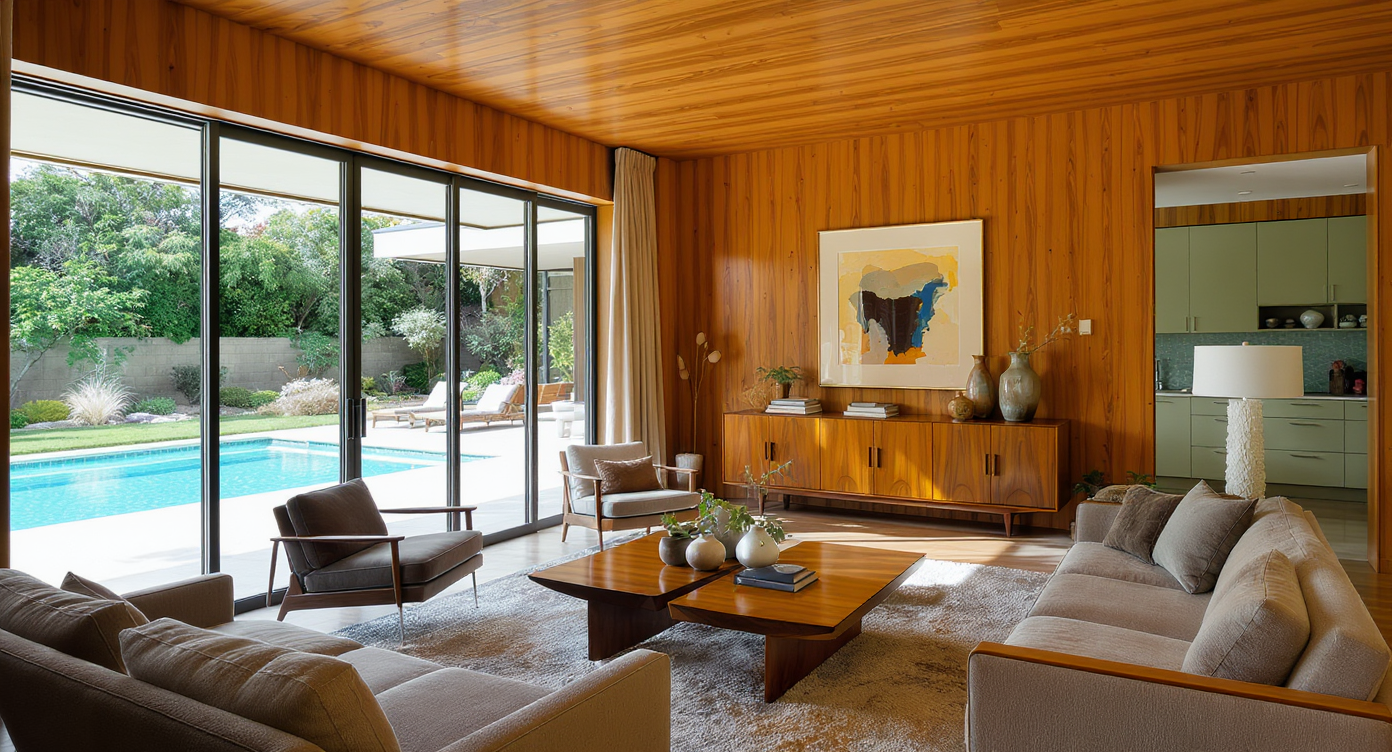
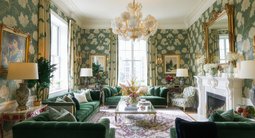
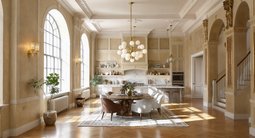







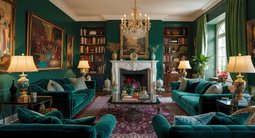


.png)